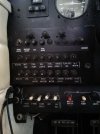Chrisgoesflying
Cleared for Takeoff
I noticed something during my past two flights, which both finished after sunset, but still during civil twilight. Obviously, after sunset, I have all my lights on. However, when I turn on all the lights, some breaker always trips. A few days ago, the fuel pump breaker tripped. Today, the nav light breaker tripped. It seems like I can't have everything on at the same time, otherwise, one of the electrical parts will go offline. It's not always the same one, but I kind of don't want to play that game to find out it's the gear one day, for example. What could cause this? Obviously, during daytime flights this isn't an issue. I don't need my interior lights. But, with days being so short, I do end up in the dark every now and then and would like to have all my lights available.


